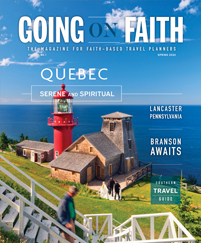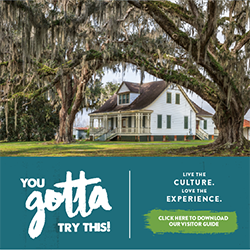Whether your group gravitates more toward Colonial history, complete with hearth cooking and blacksmithing demonstrations, or the gilt and glamour of the Roaring ’20s, there’s a Southern historic home museum to fit its needs.
Historic-home tours are a staple of group travel in many destinations, but the homes of the South offer architecture, art and memorable stories that make them stand out from the pack.
Longwood
Natchez, Mississippi
What might have been one of the most outstanding architectural achievements of its day remains frozen in the Natchez historic district. Longwood, a six-story, 30,000-square-foot mansion, remains incomplete, as workers abandoned the project when the Civil War broke out.
“People love the fact that Longwood is unfinished,” said Lynn Beach Smith, director of sales for Natchez Pilgrimage Tours. “They love the size of it and the fact that when the Civil War started, the house was abandoned by Union supporters from the North that were building it. They dropped their tools and headed for home to fight in the war. For years, the upstairs was riddled with these tools in the very places where they dropped them. Now the tools are still there, just moved so people can tour the upstairs, finished rotunda part of Longwood.”
All visitors to Longwood take a guided 45-minute tour of the home, so groups are required to reserve a time in advance through Smith, as the home can accommodate only 90 people at a time.
Natchez is home to more than 500 antebellum homes, including 13 National Historic Landmarks. Eleven are available for tours through Natchez Pilgrimage Tours, including Linden, which was the inspiration for Tara’s front door in “Gone With the Wind,” and Melrose, which is overseen by the National Park Service due to its exceptional contributions to American architectural history.
Thomas Jefferson’s Monticello
Charlottesville, Virginia
As a presidential home, architectural experimentation ground and living-history museum, Thomas Jefferson’s Monticello offers group leaders the opportunity to combine many history-oriented activities into one location.
To preserve the integrity of the grounds, which include a working farm that furnishes produce for the site’s cafe, groups can park in the ample bus parking at the bottom of Monticello’s hill at the visitor center, which reopened in 2009 with a historical-film screening room and a museum with rotating exhibits to hold objects excavated from the site.
After a short shuttle ride up the hill, groups have their choice of tours. Options include the seasonal garden- and slavery-focused programs on Mulberry Row, where the estate’s workshops were historically located, or a traditional or behind-the-scenes tour of the house. Outdoor tours run mid-March through October.
The recently launched behind-the-scenes tour takes groups into areas of the house that were previously closed to visitors.
“The house is three stories, and the top two stories were more the living quarters for [Jefferson’s] family and extended family, and they’ve been restored and reinterpreted,” said Steve Geis, director of guest relations. “They’re very popular and in-depth, but one thing about the Monticello house is that Jefferson thought staircases took up too much room, so he hid them, and they’re very narrow.”
Geis recommends that groups visit the site in the fall, when many tours come to Skyline Drive and Shenandoah to see the leaves. The site is opening several new restored areas this fall as well. The cottage that was the first structure Jefferson built on the site and the north dependencies, or work rooms and storerooms, will be reinterpreted for visitors beginning this October.









